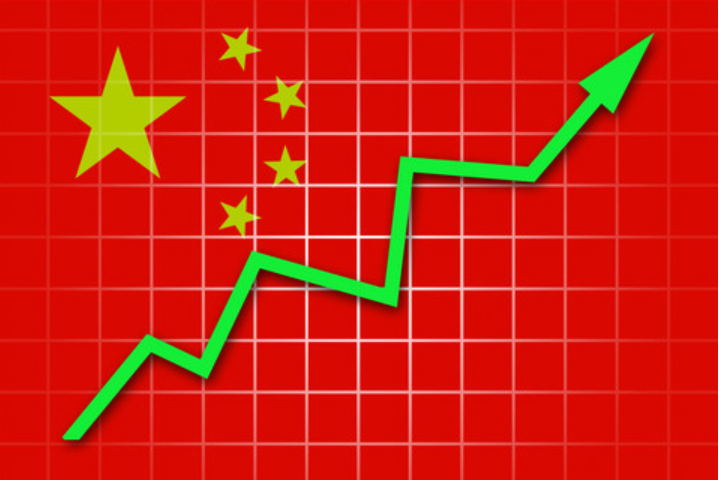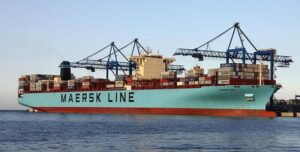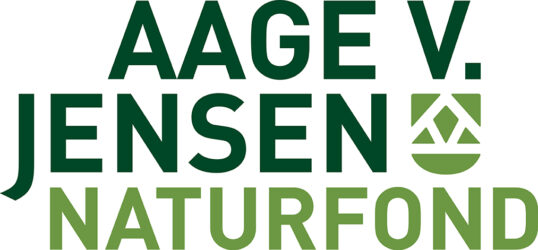ABN Amro har analyseret spørgsmålet: Hvorfor har Kina klaret coronakrisen bedre end de vestlige industrilande? Banken besvarer spørgsmålet ved at besvare 10 spørgsmål. Kina greb langt hårdere ind for at standse spredningen af virussen og har et andet vaccinationsprogram end andre. Det afgørende er, at Kina har isoleret virussen fra starten uden at lukke økonomien ned. Væksten bliver høj i år på 8,5 pct. mener ABN Amro. Kina har stimuleret væksten uden massive stimuli og får dermed ikke en stor gældsbyrde. Der vil stadig være spændinger mellem Kina og USA, men handelskrigen bliver ikke skærpet.
China Outlook 2021 – Our ten questions for the Year of the Ox
- China the only key economy showing positive annual growth in 2020 (+2.3%)
- Virus control key factor behind China’s economic outperformance following the covid-19 shock
- We have raised our 2021 growth forecast to 8.5%, from 8.0%
- Financial derisking key priority again, but no sharp U-turns in macro policy expected
- US-China tensions remain under Biden, but macro or market shocks from tensions less likely
210120-China-Outlook-2021.pdf (223 KB)
On 12 February, the Year of the Ox will start. In this China Outlook for 2021, we pose ten questions as we head into the Year of the Ox.
1. Looking back at 2020: why did China outperform following the covid-19 shock?
As covid-19 originated in Wuhan in late 2019, China was the first country to face the economic consequences of the pandemic last year. An extended Lunar New Year break in January/February 2020 and related lockdowns and other safety measures triggered an historic contraction of -6.8% yoy in Q1-2020.
However, China has shown an impressive recovery, returning to annual growth already in Q2 (+3.2% yoy) which accelerated to 4.9% yoy in Q3 and 6.5% yoy in Q4. Note that annual growth in Q4-20 was even higher than the latest pre-pandemic growth rate (6.0% in Q4-19). As a result, China was the only key economy that posted positive annual growth last year (+2.3%).
This outperformance mainly stems from the fact that China got control over the pandemic quickly, with ‘second waves’ of the virus so far being relatively contained, both in absolute and relative terms. China’s sharp recovery from the covid-19 collapse in Q1-20 is mainly driven by industry and exports, underpinned by supportive policies.
Industrial activity and exports have profited from supply-side oriented policies that have helped firms getting back to business quicker than their foreign competitors, and from pandemic-specific demand for medical supplies and computer products (sectors for which China has a competitive edge).
Meanwhile, private consumption is lagging, indicating that China’s aim to raise consumption’s share in GDP – a goal that was reconfirmed last year in the adoption of the dual circulation strategy (see below) – has clearly not taken off in the pandemic year of 2020. Particularly social distancing sensitive sectors such as passenger transport and the hospitality sector are still underperforming.
2. How important are virus flare-ups and the roll-out of vaccinations for the macro outlook?
Obviously, China also experienced flare-ups of the virus, but so far these have been small in absolute and relative numbers and have been met by quick and targeted measures keeping contagion in check. As a result, these flare-ups have not proven to be a real game changer in terms of the broad economic recovery to the same extent as in many other key economies, although they have formed some drag on private consumption growth.
At the start of 2021, China is faced with another flare-up, with new confirmed covid-19 cases reaching a nine-month high of 327 mid-January (still very low in an international context). The B.1.1.7 mutation of the virus has been detected in China as well (stemming from a covid-19 patient returning from the UK), but it is not clear to what extent this mutation is driving the recent flare-up (China has had its own mutations as well over the past year).
In addition, following the recent virus flare-up, the authorities have accelerated their vaccination programme, aiming to have inoculated 50 mln people (3.5% of the population) with Chinese vaccines before the Lunar New Year break. The sequencing of the vaccination is similar to the Netherlands (but the pace is quicker): the roll-out has started with key worker groups, followed by vulnerable segments before widening to all people over 60 years old.
3. What are our growth prospects for 2021 and 2022?
In quarterly growth terms, we expect a quiet weak start of the year, fitting to our global picture. We anticipate the Chinese economy will feel to some extent the impact of tighter mobility restrictions limiting travelling during the Lunar New Year period, a weakening of external demand, an expected pick-up in imports and the turn in the policy cycle (see below). We expect quarterly growth to pick up in the course of this year, returning towards trend levels in the second half.
In annual growth terms, we expect China’s outperformance to continue in 2021, driven by base effects. Annual growth will be very high in Q1-21 (our estimate: 18% yoy), as the historically weak Q1-20 will fade out of the numbers. Although we anticipate annual growth to drop back in the course of this year, this will bring economic growth in the full year to above-trend levels. On the basis of the latest realisations, we have raised our 2021 annual growth forecast to 8.5%, from 8.0%. We have kept our 2022 growth forecast unchanged, at 5.5%.
4. What is the outlook for inflation?
Headline inflation has fallen sharply in the course of 2020 year, despite the remarkable recovery from the covid-19 shock. CPI peaked at 5.4% yoy in January 2020, but has come down sharply since and even fell into negative territory in November 2020 (-0.5% yoy), before returning to positive numbers in December (+0.2%).
5. How will fiscal and monetary policy evolve?
To offset the impact from the covid-19 shock, China eased fiscal and monetary policy in the first half of 2020. Still, the support was relatively limited compared to the packages rolled out in developed economies and also compared to what Beijing did during the global financial crisis. On the monetary front, the authorities kept their easing measures ‘piecemeal’. In the first months of 2020, the PBoC lowered several policy interest rates, but only very modestly: for instance both the 1-year Loan Prime rate and the 1-year MLF rate were cut by 30 bps in two steps, to 3.85% and 2.95%, respectively.


6. Does the rise of the leverage ratio pose downside risks?
Outstanding credit to the real economy broke a record high of 280% of GDP mid-2020, of which almost 60% is outstanding to the corporate sector (including SOEs). If interbank debt is taking into account as well, the overall leverage ratio has already passed 300% of GDP some years ago. All this raises the question to what extent the piling up of debt forms a risk to China’s macro outlook.
7. What are China’s strategic goals for 2021?
In October 2020, China’s 14th Five-Year Plan was discussed in Beijing during the fifth plenary session of the 19th CCP Central Committee. The ‘dual circulation strategy’ was adopted. These plans were worked out in more detail during the annual Central Economic Work Conference (CEWC) held mid-December.
The CEWC resulted in eight ‘key missions’ for 2021, of which the first three ones particularly related to dual circulation: 1) strengthen strategic technologies (with an important role for the state), 2) strengthen the ability to control industrial supply chains, 3) expanding the role of domestic demand, 4) ongoing reform and opening, 5) ensuring food security, 6) strengthening anti-trust measures and preventing the disorderly expansion of capital, 7) resolving problems of residential housing in major cities and 8) start working towards the goals of achieving peak CO2 emissions before 2030 and carbon neutrality before 2060.
8. How will US-China relations evolve under the Biden administration?
Under the Trump administration, US-China tensions have flared up, particularly from 2018 onwards. The US started a bilateral tariff war with China, that ended with the so-called Phase One trade deal signed in January 2020, just before the outbreak of the coronavirus pandemic. Over the past years, the US also tightened all kinds of strategic export, FDI and other investment restrictions and has issued sanctions on Chinese individuals and companies in relation to human rights issues in Hong Kong and Xinjiang.
Under the new Biden administration, we expect US-China relations to remain challenging, as in the US the ‘be tough on China’ attitude is bipartisan and a Democratic administration will also be concerned about issues in the areas of strategic competition and human rights. That said, we expect Biden to put more efforts in strengthening ties with traditional allies and aiming to increase pressure on China in a multilateral context. Moreover, a Biden administration may also be more balanced in its approach versus China, as it will recognise that cooperation with China (for instance on climate issues) remains necessary. The new administration may well continue with strategic export and FDI restrictions and sanctions, but we do not expect a revival of the bilateral tariff war.
9. Will we see a further shift of supply chains away from China?
We expect US-China tech decoupling to continue, although US-China financial sector ties may even strengthen somewhat as China will continue to open up its financial sector to foreign institutions (and US investment banks and insurers still seem to have an appetite to enter China). On balance, global supply chains may become less US-China centered, but in our view that does not mean that China will be “isolated” from the rest of the world. It is likely that over the coming years regional supply chains will be strengthened, with the Regional Comprehensive Economic Partnership – covering trade and investment amongst 15 Asia-Pacific countries (including China and Japan, but not India) accounting for 30% of global population and GDP – having been signed in November.
Moreover, at the very end of 2020, after seven years of negotiations, China and the European Union signed a Comprehensive Agreement on Investment, which aims at creating a level playing field with regard to foreign direct investment while also paying attention to sustainable development issues in the areas of labour and environment.
10. What will the Alibaba/Ant saga do to investor confidence?
Since late 2020, the government has tightened the screws on Alibaba and its financial affiliate Ant, following a critical speech by founder Jack Ma in November. Still, the tightening of consumer trust and financial stability regulation in relation to fintech is a broader policy goal (see Q7). It also fits Beijing’s broader shifting of priorities, with ‘financial derisking’ stronger in focus again (see Q5). Damaging these companies too much seems counterproductive from that point of view and would also hurt confidence of domestic entrepreneurs and domestic and foreign investors.





















